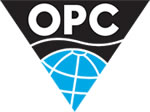
Santos’ Moomba Carbon Capture and Storage (CCS) project has achieved a major milestone for emissions reduction technology in Australia after receiving the single largest issuance of Australian Carbon Credit Units (ACCUs) from the Clean Energy Regulator (CER). The CER confirmed the issuance of 614,133 ACCUs to Santos under the approved CCS method, covering the Moomba CCS project’s initial six months of operations (September 2024 – March 2025).
Moomba CCS passed its first year of operations earlier this month, with the company’s Q3 results[1] reporting 1.3Mt of CO2e safely and permanently stored to date. At full injection rates, Moomba CCS stores more CO2e every four days than 10,000 electric vehicles avoid in one year.[2]
Santos Managing Director and Chief Executive Officer Kevin Gallagher said Moomba CCS demonstrates the real potential for large-scale emissions reduction to be delivered by carbon capture and storage projects in Australia.
Mr Gallagher said, 'Policymakers should seize the opportunity to deploy CCS to reduce emissions faster, at scale and cost competitively – particularly when Australia has a unique and natural advantage in carbon capture and storage that is complemented by a well-established, world-class regulatory regime administered by the Clean Energy Regulator.
'Leading global energy research firm, Wood Mackenzie, estimates Australia could unlock up to A$600 billion in revenue by creating a CCS industry and becoming a storage hub for the Asia-Pacific region.[3]
'This is a real industry opportunity for Australia and for South Australia, with Santos seeing interest from customers in both Australia and Asia. It’s a real pathway to green steel and green manufacturing today, and it’s an opportunity to create real jobs of the future that are skilled, well-paid and secure. Moomba CCS is a great example of the just transition in action.
'We have made history out at Moomba. It’s a first for Santos, it’s a first for South Australia and a first for Australia in terms of large-scale, onshore CCS. In bringing this project to fruition, I believe we have also started an incredible new chapter in Australia’s energy transition, which could make us a carbon capture and storage superpower.'
[1] https://www.santos.com/news/2025-third-quarter-report/
[2] Assumes full injection rate of 1.7Mt CO2e per annum. Assumes an intensity of 0.25MtCO2/MWh [DCCEEW National Greenhouse Account Factors 2024] for generation and consumption of 190wh/km [EV-database.org Energy Consumption cheat sheet] for the vehicles. Assumes ICE Vehicle emissions intensity of 200gCO2/km [NTC Carbon Dioxide Emissions Intensity for New Australian Light Vehicles 2021]. Based on 12,100km travelled [ABS Survey of Motor Vehicle Use, Australia]
[3] Wood Mackenzie – Can Australia become APAC’s CCS hub of choice? May 2024
Source: Santos











